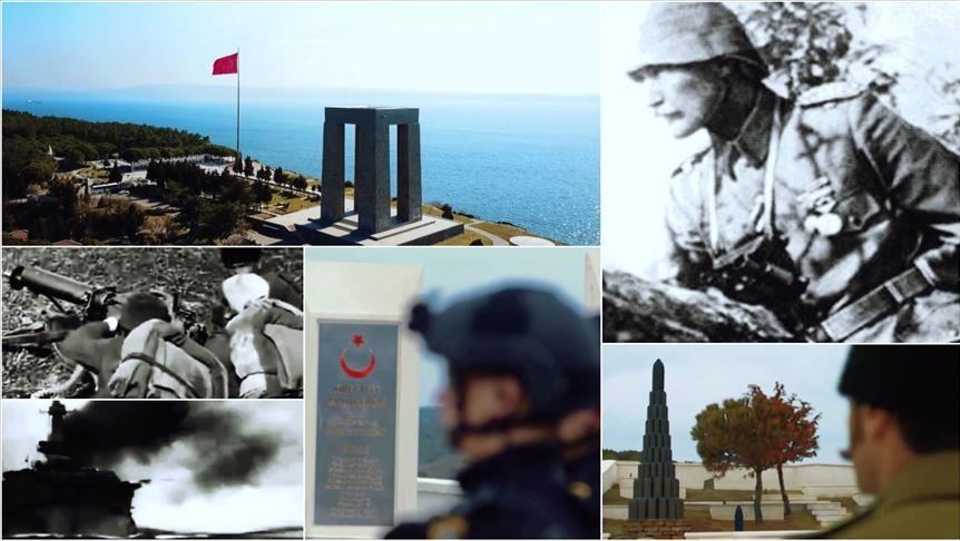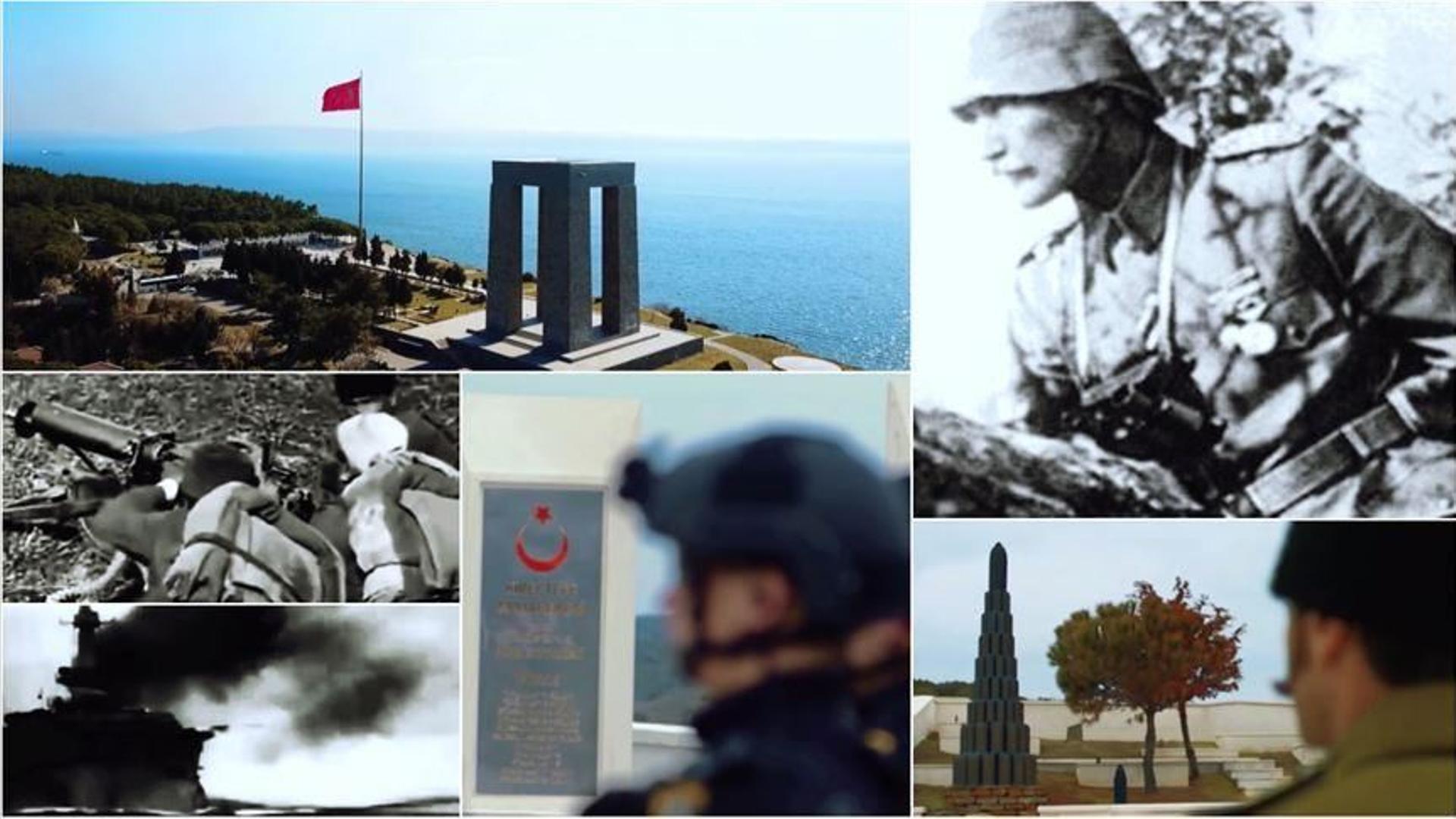
Turkey on Wednesday will commemorate the 105th anniversary of March 18, 1915, known as Canakkale Victory and Martyrs’ Day.
The poignant day marks the cataclysmic, months-long violence of the Gallipoli Campaign, when Ottoman forces suffered huge losses defending Turkish shores in northern Canakkale province from the invading Allies in WWI.
We commemorate the anniversary of the #Çanakkale Victory and remember with mercy and gratitude all our martyrs and heroes, first and foremost Ghazi Mustafa Kemal Atatürk, who entrusted these lands to us as a sacred homeland, on the occasion of March 18th Martyrs’ Day. pic.twitter.com/ttOahY53yf
— Turkish Embassy in Australia (@kanberra_be) March 17, 2020
The British War Council decided to invade and occupy the Gallipoli Peninsula on January 13, 1915. The main target was Istanbul, the capital of the Ottoman Empire.
Britain wanted to cross the Gallipoli Strait and occupy Istanbul before Russia, thus, ending the war.
Britain and France, two allied states, suffered an unexpected defeat on March 18, although they thought they would cross the Gallipoli Strait easily with battleships.
Britain’s HMS Irresistible and HMS Ocean and France’s Bouvet were sunk by mines laid by Ottoman vessel Nusret before they passed the strait. Realising that they could not pass, the allies started a military operation on April 25.
After Allied ships had been observed manoeuvring in the area during their bombardments of the #Dardanelles forts, on 8th March 1915 the Ottoman mine-layer ‘Nusret’ laid 26 mines in Eren Keui Bay. #Gallipoli pic.twitter.com/hTG64p6WAd
— Jim Grundy (@Shaw1877) March 8, 2020
Land defences
The 5th Army Commander Liman von Sanders left forces in the narrowest part of the Gallipoli Peninsula, expecting allied forces would land on the shores of the Saros Bay. Sanders was planning to attack during the military operations while keeping the troops behind.
As Britain and France failed on March 18, they planned to take troops to Ariburnu, Seddulbahir, and Kumkale shores on April 25 to open the Gallipoli Strait with a military operation.
The Ottoman Empire went to war alongside ally Germany, along with citizens and volunteers in-country of more than 30 nationalities.
The allied army, on the other hand, consisted of British and French soldiers, as well as soldiers brought from colonies in Australia, New Zealand, India, Nepal and Senegal.
NZ/Australia have cancelled all #AnzacDay2020 services on the Gallipoli Peninsula. PM Ardern: the Gallipoli services in particular have become a pilgrimage…for many New Zealanders. But with global travel restrictions and isolation requirements…it is not practical to go ahead. pic.twitter.com/FVUPUq0Pw9
— Wendy Hinton (@HintonWendyNZ) March 18, 2020
Military operations
The second period started at the Gallipoli Front with allied soldiers landing troops in Ariburnu, Seddulbahir, and Kumkale.
British General Sir Ian Hamilton faced unexpected resistance on April 25 at his first target, Alcitepe district. Australians and New Zealanders, referred together as Anzac troops, suffered a major loss in Ariburnu, where they landed on the same day.
The Entente Navy landed at Chunuk Bair and Hisarlik districts and was repelled shortly thereafter.
Under the command of Sergeant Yahya, the soldiers in Ertugrul Bay repelled outnumbered British forces.
19th Division Commander Lieut Col Mustafa Kemal, who would later become the founder of the Turkish Republic, sent an additional regiment to Ariburnu.
The regiment repelled eight full battalions with the support of additional troops.
‘I am ordering you to die’
Mustafa Kemal commanded the 57th Regiment and additional troops, “I am not ordering you to attack. I am ordering you to die.”
On April 26, he dispatched the 72nd Regiment and the 8th Mountain Battery to the southern wing in the face of the enemy’s intense attacks. The corps reported any additional troop could not be sent. Col Kemal said that day was “the most critical day against the enemy.”
The first Battle of Kirte took place April 28-30. Allied forces of two British and one French brigade failed to occupy Alcitepe against the defence of the Ottoman soldiers.
The Entente States went to the Second Battle of Kirte on May 6-8 to take over Alcitepe, asking for new reinforcements.
Despite the great losses, Britain’s First Lord of the Admiralty Winston Churchill was ordered to continue the operations.
“I am not ordering you to attack. I am ordering you to die”
— ABakhsh Joiya (@gene_trait) March 17, 2020
Salutes to braves
Martyrs are alive. #18thMartÇanakkale pic.twitter.com/G63lDXjEMG
Churchill resigns
Churchill resigned on May 17 from the British Cabinet. On the same day, the British government requested Russia send troops to the Gallipoli Peninsula.
Esat Pasha, who was appointed as the commander of the North Group, ordered an attack for Ariburnu on May 18, but four divisions of the Ottoman forces failed.
A ceasefire was reached between the Ottomans and the Entente powers on May 23. The ceasefire was effective between 9:30 am and 4:30 pm for the parties to collect dead and injured soldiers.
The warring sides would return to their trenches at 4 pm and the war would start again.
To be fair, Churchill was perfectly comfortable with letting huge numbers of people die. Gallipoli. The famine in India – Churchill didn’t consider them equal as people even. The man was an elitist, genocidal racist.
So maybe the Churchill comparison /is/ apt.
— Paul Jakma (@pjakma) March 15, 2020
Mustafa Kemal promoted to colonel
Lieut Col Kemal had great successes in the Gallipoli Peninsula. He halted the advance of the Anzac troops landing in Ariburnu into the peninsula in Chunuk Bair. Thereupon, Kemal was promoted to colonel by Sanders on June 1.
General Hamilton decided to attack the Yassitepe-Alcitepe on May 19, considering the great losses. Ottoman reserve troops suppressed the attack of enemy troops June 4-6.
At the First Battle of Kerevizderesi, French Corps attacked to occupy the Kerevizderesi district but was suppressed by the Ottoman defence June 21-22.
The Entente States, who wanted to take over Zigindere district, also failed in the Battle of Zigindere, which lasted from June 28 to July 5.
Landing at Suvla Bay
As allied forces failed in the landing on April 25, they started a new attack at Suvla Bay on August 6.
Under the command of Col Kemal, Ottoman forces defeated the Anzacs and Indian troops with a bayonet thrust.
End of war
The British government decided to withdraw some of its soldiers from the Gallipoli Peninsula on December 9, Suvla Bay and Ariburnu were evacuated immediately, but a small number of soldiers were kept in the Seddulbahir until Dec 20.
The Entente forces evacuated Seddulbahir on January 9, the last point they occupied. As they completely withdrew from the Gallipoli Peninsula, the Turkish nation won the victory.
March 18 is considered one of the most significant victories in Turkish history and is commemorated with Turks honouring their fallen and war veterans.
The March 18, 1915 victory gave the country a massive morale boost that enabled it to wage a war of independence and eventually, in 1923, form a republic from the ashes of the Ottoman Empire.










Discussion about this post